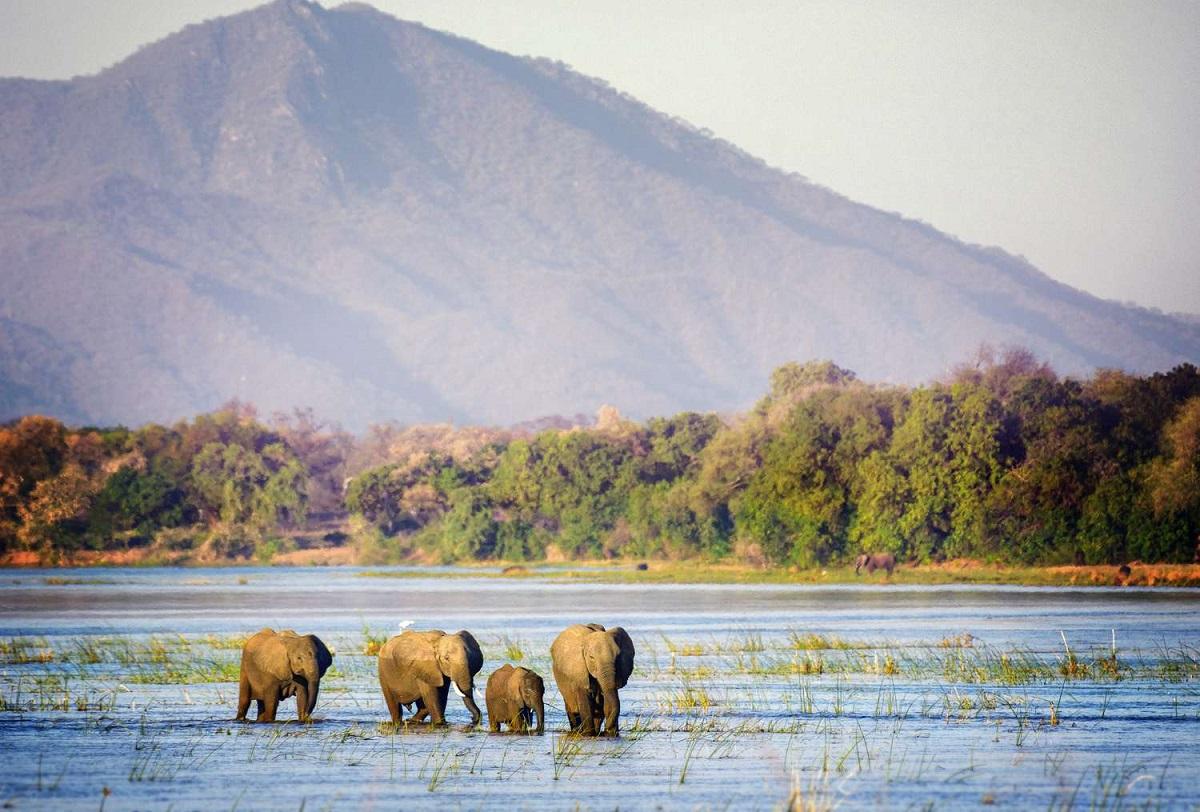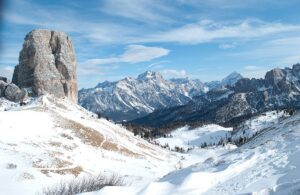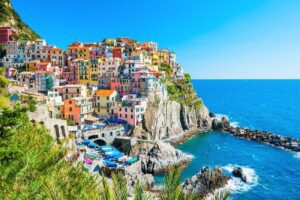Mana Pools National Park is located in northern Zimbabwe along the Zambezi River and is one of Africa’s most pristine wilderness areas. Spanning over 2,196 square kilometers, the park is a UNESCO World Heritage Site known for its untouched beauty and abundant wildlife.
The name “Mana” comes from the Shona word for “four,” referring to the four large pools formed by the meandering Zambezi River, which are a central feature of the park. These pools attract a diverse array of animals, especially during the dry season, making Mana Pools one of the best places for game viewing.
Visitors to the park can expect encounters with elephants, lions, leopards, hippos, and a variety of bird species. The park is also famous for offering some of the best walking and canoeing safaris in Africa, allowing for an up-close and immersive wildlife experience.
Please Download Our Mobile App here.
Overview of Mana Pools National Park
Mana Pools National Park is part of the larger Middle Zambezi Biosphere Reserve and is located on the southern bank of the Zambezi River. The park is renowned for its dramatic scenery, which includes vast floodplains, baobab trees and lush forests that provide a rich habitat for a wide range of wildlife. The park’s four permanent pools, along with seasonal rivers and smaller waterholes, form the lifeline of the region.
The park is one of Zimbabwe’s most popular safari destinations, known for its focus on conservation and eco-tourism. In addition to traditional game drives, Mana Pools is one of the few places in Africa where walking safaris are a key attraction. Canoe safaris on the Zambezi River are also a major draw, offering a unique way to observe wildlife from the water.
Wildlife in Mana Pools National Park
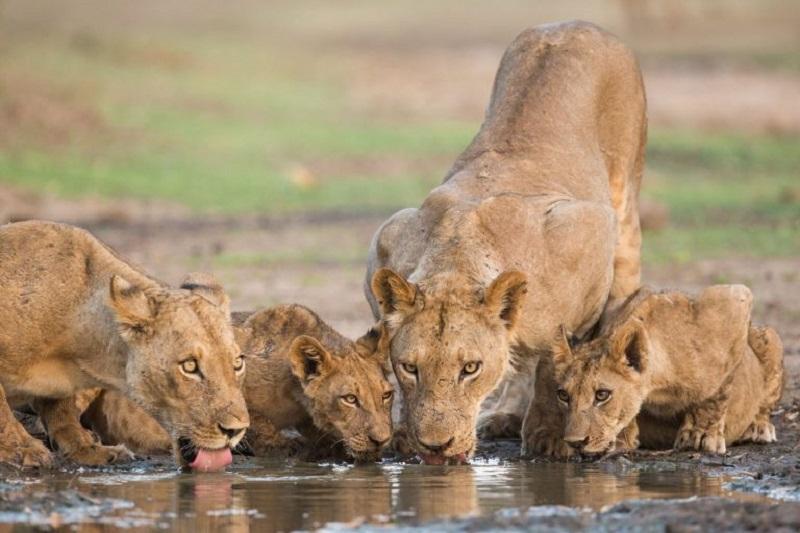
Mana Pools National Park is home to a wide variety of wildlife, making it a haven for nature lovers and safari enthusiasts. The park is particularly famous for its elephant population, with large herds often seen near the Zambezi River, especially during the dry season when water is scarce in other areas. Elephants in Mana Pools are known for their unique behavior of standing on their hind legs to reach high branches.
Lions are another highlight of the park, often seen patrolling the floodplains and riverbanks. The park is also home to leopards, which are more elusive but can be spotted in the dense forests. Hippos and crocodiles are commonly found in the pools and along the river, while buffalo herds roam the park in large numbers.
In addition to these iconic species, Mana Pools boasts a rich birdlife, with over 350 species recorded in the park. The area is particularly popular with birdwatchers, who come to see species like the African fish eagle, carmine bee-eater and various types of kingfishers. The park’s diverse ecosystem, which includes woodlands, floodplains and riverine environments supports a wide range of species making it a prime destination for wildlife viewing.
The Best Time to Visit Mana Pools National Park
The best time to visit Mana Pools National Park is during the dry season, from May to October. During this time, animals congregate around the Zambezi River and its pools, making wildlife viewing easier and more rewarding. The dry season also provides excellent conditions for walking and canoeing safaris, with clear skies and pleasant temperatures.
The rainy season, from November to April, sees fewer visitors as some parts of the park become inaccessible due to flooding. However, this time of year brings lush landscapes and the arrival of migratory birds, making it a good option for birdwatching enthusiasts. The park is officially closed to visitors during the peak of the rainy season, usually from mid-January to early March.
Getting to Mana Pools National Park
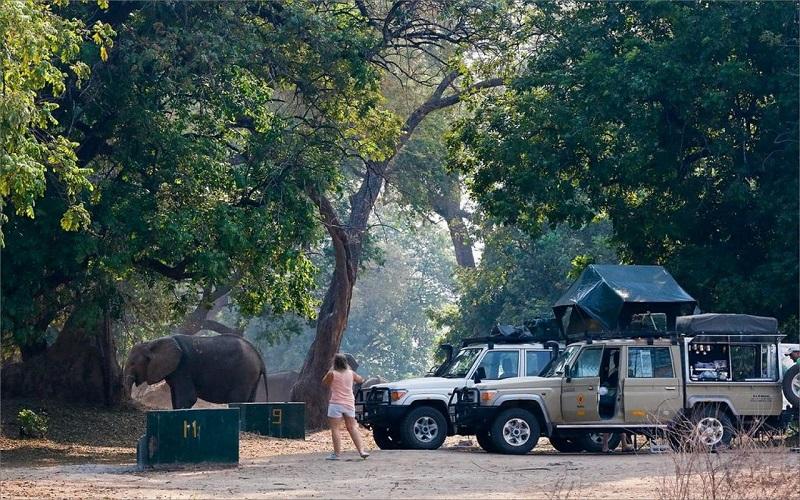
Mana Pools National Park is located about 350 kilometers north of Harare, Zimbabwe’s capital city. The most common way to reach the park is by road, with the drive taking about 6 to 8 hours depending on the route and road conditions. The last stretch of the journey involves a rough, unpaved road, so it is recommended to use a 4×4 vehicle.
For those looking to save time, charter flights are available from Harare or Victoria Falls to airstrips near the park. This option significantly reduces travel time and provides stunning aerial views of the Zambezi Valley.
Other Activities in Mana Pools National Park
In addition to game drives, Mana Pools National Park offers a range of other exciting activities. Walking safaris are a major highlight, allowing visitors to explore the park on foot with an experienced guide. This immersive experience provides a deeper connection with the environment and a unique opportunity to observe wildlife up close.
Canoe safaris on the Zambezi River are another popular activity, offering a peaceful yet thrilling way to observe animals such as elephants, hippos and crocodiles from the water. For birdwatchers, the park is a paradise with guided birding tours available to help spot the wide variety of species found in the region.
Fishing is also allowed in certain parts of the Zambezi River, with tigerfish and bream being the most sought-after catches. Visitors interested in fishing should check with park authorities about the best spots and necessary permits.
Park Fees for Mana Pools National Park
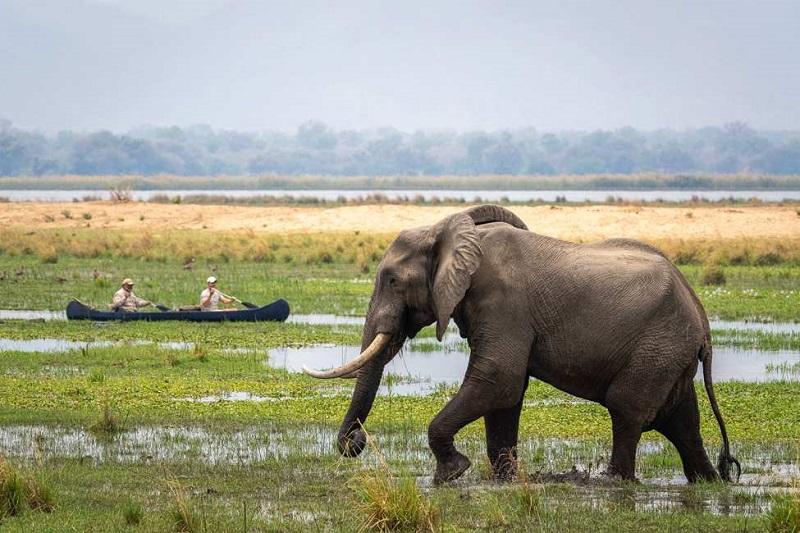
As of 2024, park fees for Mana Pools National Park are as follows:
- Foreign Visitors (Adults): $20 per person per day
- Foreign Visitors (Children): $10 per person per day
- Zimbabwean Citizens (Adults): $12 per person per day
- Zimbabwean Citizens (Children): $6 per person per day
Additional costs apply for guided safaris, walking tours, and canoe safaris. It is recommended to confirm fees with the park or tour operators before your visit.
FAQs: Touring Mana Pools National Park
Do I Need a Car to Tour the Park?
Yes, a vehicle is essential for touring Mana Pools National Park. While guided tours are available, most visitors explore the park in their own 4×4 vehicles.
Are Unguided Walks Allowed in the Park?
Unguided walks are not permitted in the park for safety reasons. Walking safaris must be conducted with a licensed guide.
How Much is a Game Drive in the Park?
Game drives in Mana Pools vary in price depending on the operator and the length of the tour. A typical half-day game drive costs between $50 and $100 per person.
Conclusion
Mana Pools National Park offers an unparalleled wilderness experience, combining the beauty of the Zambezi River with an abundance of wildlife. Whether on foot, by vehicle, or canoe visitors can immerse themselves in one of Africa’s most pristine and remote safari destinations.
